Chainlink has already created hundreds of millions in revenue from large enterprises paying for access to the platform, yet LINK token trades at just $24.32 with analysts targeting $32 by late 2025. This Token Insights analysis reveals why institutional adoption of real-world asset tokenization could position Chainlink as the backbone of a $10 trillion market transformation, despite LINK remaining significantly undervalued compared to competitors with far less utility.
Summary: Chainlink dominates enterprise blockchain infrastructure with $75 billion in Total Value Secured and partnerships spanning Swift, JPMorgan, and major financial institutions. The platform’s Cross-Chain Interoperability Protocol (CCIP) and tokenization services position it to capture significant value from the projected $10 trillion RWA market by 2030.
Enterprise Adoption Accelerates Across Financial Giants
The financial industry’s embrace of Chainlink technology has reached unprecedented levels, with major institutions moving beyond pilot programs to production deployments. Swift collaborated with Chainlink and over 10 leading institutions—including Euroclear, Clearstream, BNP Paribas, BNY Mellon, and Citi—to successfully demonstrate secure blockchain connectivity for tokenized asset transfers.
Swift, UBS Asset Management, and Chainlink successfully completed a pilot for settling tokenized fund subscriptions and redemptions using the Swift network, enabling digital asset transactions to settle with fiat payment systems across more than 11,500 financial institutions. This breakthrough eliminates the need for global adoption of on-chain payment systems while maintaining the efficiency benefits of tokenization.
The scope of institutional integration extends far beyond traditional banking. DTCC, the world’s largest securities settlement system processing $2+ quadrillion annually, is actively working with Chainlink to bring capital markets onchain. Australia and New Zealand Banking Group (ANZ) has implemented Chainlink CCIP to demonstrate cross-currency, cross-chain purchases of tokenized assets, showcasing real-world applications of multi-chain finance.
These partnerships represent more than experimental trials—they demonstrate Chainlink’s evolution into critical financial infrastructure. Franklin Templeton’s tokenized fund held over $760 million in total net assets as of May 2025, while Citi moved its token services platform into commercial use in 2024, facilitating multimillion-dollar daily transactions.
The $10 Trillion Real-World Asset Revolution
Chainlink forecasts the global tokenized asset market could surge to $10 trillion by 2030, driven by institutional adoption and regulatory progression. Current tokenized assets total approximately $118.57 billion, with Ethereum holding 58% of all tokenized assets, indicating massive growth potential as traditional finance digitizes.
Driving Forces Behind Tokenization Growth:
The tokenization wave encompasses multiple asset classes transforming how value transfers globally. A survey by BNY Mellon and Celent reveals 97% of institutional investors agree tokenization will revolutionize asset management. Beyond financial markets, the World Economic Forum estimates $867 trillion of value is ready to be disrupted by tokenization.
Ethereum’s over 6 million daily active users serve as a key driving force behind market growth, alongside regulatory initiatives like Singapore’s Project Guardian. These regulatory frameworks provide the compliance infrastructure necessary for institutional adoption at scale.
The competitive advantage becomes clear when examining Chainlink’s comprehensive approach. While competitors focus on single solutions, Chainlink is the only fully featured platform solving tokenized asset requirements while maintaining institutional-grade security. This positioning as universal infrastructure for tokenized markets creates significant barriers to entry for competitors.
Chainlink’s Infrastructure Monopoly
Chainlink has enabled over $8.8 trillion in transactional value and brought 10.8 billion+ data points onchain, establishing unmatched network effects in oracle services. The platform’s data services have become the industry standard, securing $80B+ in Total Value with 67.77% total market share including 83.67% on Ethereum.
This dominance extends across multiple blockchain ecosystems. Over 2,000 Chainlink Price Feeds and Data Streams operate in production across 60+ blockchains, creating a comprehensive data infrastructure that competitors struggle to replicate. The platform’s modular architecture enables institutions to access data, cross-chain connectivity, privacy, compliance, and legacy system integration through a single provider.
CCIP: The Bridge to Multi-Chain Finance
Cross-Chain Interoperability Protocol represents Chainlink’s most significant technological advancement for enterprise adoption. CCIP enables seamless digital asset transfers across chains with battle-tested security powered by Chainlink oracle networks securing tens of billions of dollars.
The protocol addresses a critical infrastructure gap as finance becomes increasingly multi-chain. Financial institutions can leverage existing Swift infrastructure to efficiently instruct tokenized value transfers across public and private blockchain networks using CCIP. This capability eliminates the complexity institutions face when operating across multiple blockchain environments.
CCIP launched in July 2023 and enables dApps to access broader user bases and liquidity from multiple blockchains while reducing development time. For financial institutions, this translates to reduced operational overhead and increased efficiency when managing tokenized assets across different networks.
The protocol’s security architecture includes an independent Risk Management Network that enhances security by monitoring, detecting, and mitigating risks in real-time. This enterprise-grade security framework addresses institutional concerns about cross-chain vulnerabilities that have historically limited adoption.
Revenue Transformation Through LINK Reserve
Chainlink introduced the LINK Reserve—a strategic onchain reserve accumulating LINK tokens using offchain revenue from enterprise adoption and onchain service usage. This mechanism fundamentally changes LINK’s economic model from a token with selling pressure to one with programmatic buying pressure.
The Reserve has already accumulated over $1 million worth of LINK from the early launch phase, expected to grow as more revenue converts to LINK. Payment Abstraction enables enterprises to pay in their preferred currencies while automatically converting revenue to LINK through decentralized exchanges.
Revenue Sources Fueling LINK Demand:
This revenue transformation addresses long-standing concerns about LINK’s tokenomics. Previously, Chainlink Labs funded operations through token sales, creating consistent selling pressure. The new model expects no withdrawals from the Reserve for multiple years, allowing sustained growth as industry demand increases.
The economic impact extends beyond simple buyback mechanisms. 50% of fees from staking-secured SVR services now help fund the Chainlink Reserve via Payment Abstraction, creating multiple revenue streams supporting LINK accumulation. This diversified approach reduces dependence on any single revenue source while building sustainable token demand.
Price Potential and Analyst Projections
LINK price prediction models show bullish momentum toward the $27-32 range by late 2025, with CoinPedia’s aggressive $32 target contingent on breaking the critical $24 resistance level. Current technical analysis supports this outlook with strong moving average positioning and bullish MACD signals.
Chainlink daily wallet creations reached a record 9,625, marking the strongest growth pace observed in 2025, indicating expanding user adoption beyond institutional partnerships. This grassroots growth complements enterprise adoption, creating multiple demand drivers for LINK.
Long-term projections appear even more optimistic. Price predictions for 2030 range between $81.3 and $110, with an average price of $98.5, based on Chainlink’s strategic positioning in the growing RWA space. These forecasts assume Chainlink maintains its market leadership as tokenized assets reach projected $10 trillion valuations.
Comparative Valuation Analysis
Research firm K33 identifies LINK as the “safest bet” for investors seeking exposure to the RWA tokenization narrative. The analysis notes Chainlink’s unique positioning as infrastructure connecting blockchains with traditional finance, creating sustainable competitive advantages.
Market inefficiencies become apparent when comparing LINK to competitors. Despite Chainlink’s enterprise adoption and revenue generation, the token trades at substantial discounts to projects with less utility and smaller market positions. This valuation gap suggests significant upside potential as markets recognize Chainlink’s fundamental value.
Implementation Challenges and Risk Factors
Despite positive fundamentals, several challenges could impact LINK’s price trajectory. Multiple hurdles exist around audit standards, asset valuation, and regulatory compliance before the $10 trillion forecast materializes. Regulatory uncertainty, particularly in the United States, could slow institutional adoption rates.
Technical and Competitive Risks:
Integration timelines with traditional finance remain longer than anticipated. The integration process with traditional finance infrastructures is notoriously slow, potentially spanning several years before tangible value from collaborations materializes. This extended timeline could test investor patience despite strong fundamentals.
Competition intensifies as other platforms recognize the tokenization opportunity. While Chainlink maintains significant advantages, new entrants could capture market share in specific niches or geographic regions. The platform must continue innovating to maintain its technological leadership.
Market volatility represents another consideration. Recent whale accumulation above $100,000 has climbed to multi-month highs, suggesting institutional confidence, but cryptocurrency markets remain subject to broader sentiment shifts that could impact near-term performance.
FAQ: Chainlink Investment Analysis
What makes Chainlink unique in the oracle space? Chainlink dominates with 67.77% market share in oracle services and has enabled over $8.8 trillion in transaction value. Its comprehensive platform provides data, cross-chain connectivity, compliance, and enterprise integration through a single provider.
How does the LINK Reserve affect token economics? The Reserve accumulates LINK using enterprise revenue and onchain fees, creating buying pressure instead of traditional selling pressure. Over $1 million in LINK has already been accumulated with no planned withdrawals for multiple years.
What role does CCIP play in Chainlink’s growth? CCIP enables secure cross-chain asset transfers, addressing a critical need as finance becomes multi-chain. Major institutions like Swift use CCIP to connect traditional banking infrastructure with blockchain networks.
Why do analysts predict $32 LINK prices? Technical analysis shows bullish momentum with strong moving averages and institutional adoption creating fundamental demand. Price predictions range from $27-32 by late 2025 based on enterprise partnerships and RWA market growth.
What risks should investors consider? Regulatory uncertainty, slow traditional finance integration timelines, and competitive pressures represent key risks. The tokenization market’s growth depends on overcoming compliance and technical challenges.
How large is the tokenization opportunity? Chainlink forecasts the tokenized asset market reaching $10 trillion by 2030, supported by institutional surveys showing 97% of investors believe tokenization will revolutionize asset management.
Which major institutions use Chainlink? Swift, JPMorgan, UBS Asset Management, ANZ Bank, Franklin Templeton, and DTCC represent key partnerships. These institutions use Chainlink for production tokenization and cross-chain settlement applications.
How does Chainlink compare to competitors? Chainlink provides the only comprehensive platform for tokenized assets, while competitors focus on single solutions. This positioning creates significant competitive advantages and barriers to entry.
Key Takeaways
- Infrastructure Monopoly: Chainlink dominates oracle services with 67.77% market share and partnerships spanning the world’s largest financial institutions, creating significant competitive moats in enterprise blockchain adoption.
- Revenue Transformation: The LINK Reserve fundamentally changes token economics by converting enterprise revenue into programmatic LINK purchases, eliminating historical selling pressure while building sustained demand.
- Tokenization Leadership: Positioned as the backbone infrastructure for the projected $10 trillion tokenized asset market, with comprehensive solutions spanning data, cross-chain connectivity, and enterprise integration.
- Price Upside Potential: Analysts target $32 by late 2025 with longer-term projections reaching $98+ by 2030, driven by enterprise adoption and expanding RWA market opportunities despite current undervaluation relative to fundamentals.
Chainlink’s transformation from a DeFi price oracle provider to the infrastructure standard for institutional tokenization represents one of cryptocurrency’s most compelling value propositions. While regulatory challenges and integration timelines create near-term uncertainties, the platform’s comprehensive technology stack and enterprise partnerships position it to capture significant value from traditional finance’s digital transformation.






